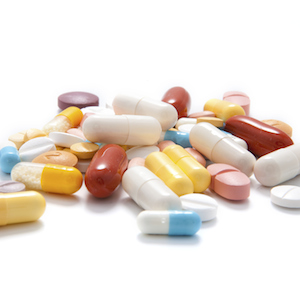blog
April 3, 2014 | Source: Rapid Micro Biosystems, Inc.
Working with Unusual Sample Types: Solubilizing Large Particulates
POSTED BY Rapid Micro Biosystems | 4 minute read
April 3, 2014 | Source: Rapid Micro Biosystems, Inc.
POSTED BY Rapid Micro Biosystems | 4 minute read
 While it is often preferable to use filtration to test samples in pharmaceutical manufacturing, samples that contain fillers, dyes, living tissues and other particulates are difficult or impossible to filter with normal procedures. Examples are products like capsules or gels, which can be difficult or are perceived to be impossible to test with filtration.
While it is often preferable to use filtration to test samples in pharmaceutical manufacturing, samples that contain fillers, dyes, living tissues and other particulates are difficult or impossible to filter with normal procedures. Examples are products like capsules or gels, which can be difficult or are perceived to be impossible to test with filtration.
There are options microbiologists can explore to filter unusual sample types through industry standard 0.45 micron filters. In the first installment of this series, we'll discuss common solutions for dealing with capsules, creams and papers.
Even if the product appears difficult or impossible to filter, microbiologists should still test the sample using their standard method. If the standard method has been tested in the past unsuccessfully, it is still good practice to repeat the test and confirm the results.
In cases where large particles can't pass through standard filters, mild detergents such as polysorbate 80 solutions can often solubilize many particulates while leaving bacterial cells intact, alive and ready to grow. This technique most commonly works with samples such as the following:
- Capsules: The capsules often used for cold remedies, pain relievers and other medicines tend to contain large amounts of dyes, thickeners and other materials that don't easily dissolve. By adding a mild detergent to the mix, microbiologists can solubilizes these materials, allowing for filtration.
- Creams: Cosmetic creams often contain oils, which can form globules too large to pass through 0.45 micron membranes. In these cases, microbiologists can use solubilizing agent such as isopropyl myristate that separate the oil micelles and allow filtration.
When testing wipes, cleaning towels and other paper-based products, microbiologists also have to contend with large fibers that will not pass through the filtration membranes. A simple pre-filtration step through a larger pore size material can remove these fibers while not capturing the microbial contaminants and thus allow for subsequent filtration. To perform this step, the material can be added to a buffer of choice and shredded to create a slurry. This slurry is passed through a sieve with pores small enough to capture the fibers, but large enough to allow microorganisms to pass through. The resultant solution can then be filtered and tested using normal procedures.
Rapid Micro Biosystems’ technical services team works closely with companies to assess their product samples and offer strategies to simplify and accelerate their processing. If you work with unusual samples, contact us today to learn how you can use the Growth Direct™ System to achieve reliable results in about half the time.